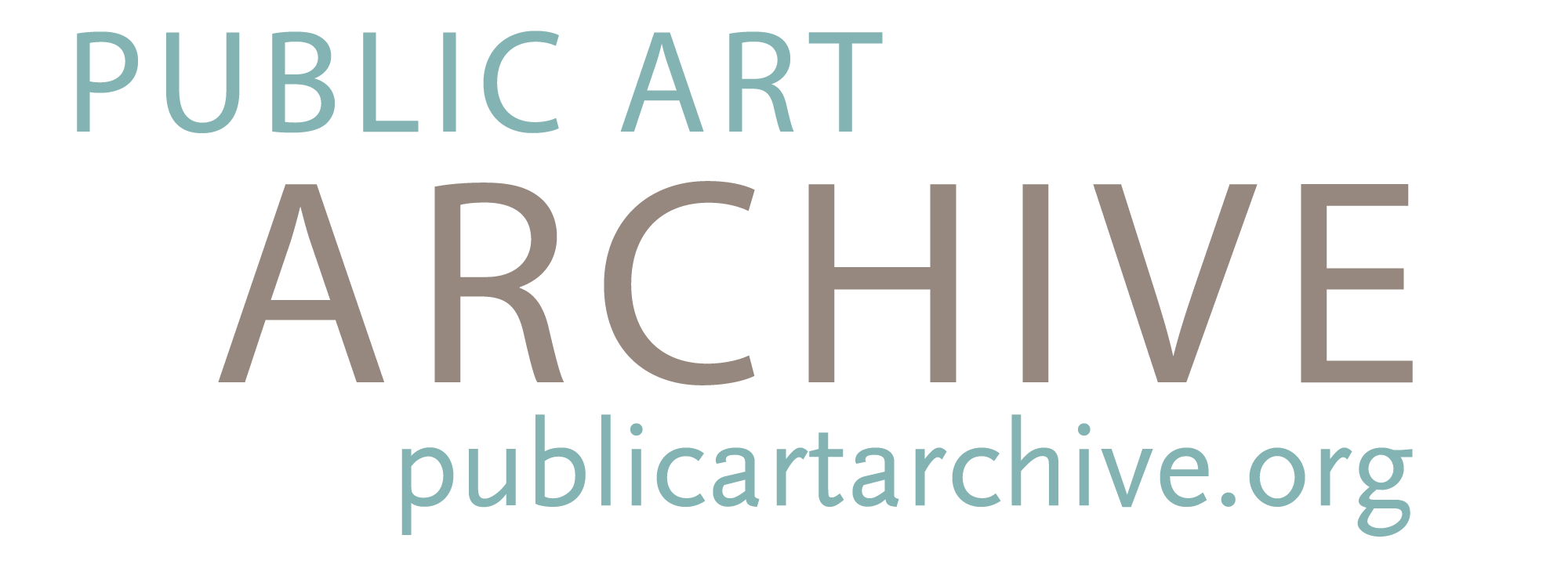Written By: Elysian Koglmeier

Can public art reduce crime? Ben Sandberg, a recent graduate of Cornell’s Public Administration Masters program, sought to answer that question. Curious to know what he discovered? Read our interview with Ben to learn more about his public art GIS mapping project.
Tell us a little about your yourself! Why did you go into the public administration field? Did you imagine that your studies would lead to a research project on public art?
My background is in theater and I worked as a scenic artist for a number of years in the Bay Area before I got my MPA from Cornell University. At Cornell I gravitated towards the application of GIS to evaluate both cultural organization performance and cultural policies. One of my final projects looked for ways to use GIS to model the impact of public art (specifically murals) on crime rates in surrounding neighborhoods.
Before getting into more detail, can you briefly explain GIS for readers who aren’t familiar with the system?
Absolutely! GIS (Geographic Information System) is a system used to manage, analyze, and visualize spatial data and information. There are almost an infinite number of possible applications of these tools. My understanding is that the initial application of GIS was focused on evaluating environmental conditions and planning/zoning information – succinctly, fields that are inherently spatial in nature.
Have other people used GIS analysis to evaluate cultural institutions or policy? If so, what kind of information are people typically trying to gather or assess?
I think the most popular application of GIS is developing and analyzing a cultural inventory. The National Endowment for the Arts has some resources on cultural asset mapping and an ArtWorks funded report tracking art participation with GIS.
GIS data can be used by communities to understand the types and impact of their cultural institutions. The visualization of the data can range from a simple map of cultural institutions to a more complex analysis of accessibility and equity issues. Specifically, the project could be an assessment to evaluate the optimal allocation of cultural institutions or an examination of audience/donor demographics and spatial distribution.
This is the tip of the iceberg. I think practitioners and administrators are becoming aware of the powerful applications of spatial software and beginning to measure and evaluate cultural programs in light of their audience’s demographics, economic class, or position on the urban/rural spectrum.
Have a GIS project to share? We’d love to hear from you – please comment below!
You set out to evaluate the impact of public art projects. Why did you focus on crime?
My basic assumption was that improving the way that a neighborhood looks would have an impact on behavior in the neighborhood and those surrounding it.
In some ways, it is a positive extension of the broken windows theory, which links disorder and incivility within a community to subsequent occurrences of serious crime. Communities use positive intervention in the shape of public art projects (though it could be other projects like community gardens) instead of focusing on punishing small crimes like vandalism or loitering, to demonstrate community engagement and order.
When I dug deeper though, I could not come up with a previous study that used a statistical model to measure public art’s impact on crime. There is an abundance of anecdotal evidence. Arts organization or other public art projects often tout areas of high crime as ideal sites – police officers report less crime after a public mural goes up or business improves for surrounding stores. But, I’m not aware of a statistical study that measures the relationship between public art and neighborhood crime. So I wanted to build one!
Why is that anecdotal evidence not enough? Can you give an example?
Let’s take a hypothetical Community A that implements some public art project in a high crime neighborhood. The previous year, the police department reported 25 arrests in a 3 block radius around the project, whereas the department reports only 10 arrests in the subsequent year. Superficially, a win! But if the implementation of that project meant more police patrols through the area to assess the impact of the mural, then the drop in crime rate might be attributed to heightened police presence, and not the public art mural.
There could be a 100 other reasons, besides the implementation of an art project, for the observed reduction in crime. Obviously this is a very large simplification, but applying spatial statistics to the problem should be able to further isolate the impact of the public art project.
Tell us more about the project. What were your initial findings? Did you face any unforeseen difficulties?
This project was initially conceptualized as part of a spatial statistics modeling class. I selected Washington D.C. as my area of study because it has a robust collection of spatial data that is publicly accessible, (opendata.dc.gov), which includes data sets about individual crimes in each year since 2008, as well as location data for public art projects.
I limited the scope of the model to the impact of murals, instead of all types of public art projects. I hoped that limiting the scope of the model would increase the overall explanatory power of the model, and I had more mural sites than other types of public art projects.
My first attempts were rather crude and did not demonstrate any conclusive findings. I suspect that’s a problem of model specification more than an indication that there is no connection.
I am now in the process of further refining the model given the difficulties of the first attempt. For example, a significant hurdle is specifying public art’s neighborhood of impact. Do you compare fluctuating crime rates in a 250 ft. radius around the project? 500 ft? 3 city blocks? Depending upon the area of analysis, the results might vary drastically.
I also have to look beyond the spatial neighborhood and factor in time. Does it make sense to look at crimes in the year immediately before and after the mural’s implementation? This approach makes results highly susceptible to random fluctuations. An alternative is to take an average crime rate of three years prior and three years after to smooth out random fluctuations. However, there are real world implications – this assumes that the mural is looked after and maintained over the subsequent 3 years and that its impact is constant.
The findings that result from each of these decisions help illuminate the kind of impact that public art projects have. I am excited to find opportunities to continue to explore this question because I think the findings can be informative for evaluating the neighborhood impacts of public art projects.
Even though there are still a number of obstacles you haven’t figure out yet, I’m not going to let you off the hook. Do you have a hypothesis, based on your initial data crunching, of the type of relationship between public art and crime rates?
I have a couple of gut reactions shaped by some frustrating hours of work. My initial guess is that public art, as an independent project, has negligible impacts on crime rates – though I offer that hypothesis with a huge caveat.
I believe that the potential impact public art can have is not a function of art being in a specific place, but is the end product of a process of community engagement. I think that community engagement is a critical piece of the whole crime picture, and is nebulous in a way that makes it extraordinarily difficult to quantify.
Public art, when done “right” can be a great proxy variable. When community leaders and residents are involved in the planning, design, and implementation of public art, that’s where I expect to see impact on crime rates. Public art is a vehicle for community engagement as opposed to the end in of itself.
If this hypothesis is right, then it would guide administrators and practitioners of public art projects towards a specific method of implementation, instead of “art for art’s sake” – to quote Yasha and Dauber in Cradle Will Rock. Sorry, sometimes I can’t hide my theater background!
Ben, your work is really interesting and seems to initiate a new tool for evaluating public art projects. I want to thank you for the time you took to share your thoughts. I’d love to close by tapping into your previous artistic career. If you were to create a public art work…what would it be?
First, huge thanks to the Public Art Archive for indulging my pet interest. I’m hoping to find opportunities to further refine this model and develop other GIS applications to help guide public art administrators and cultural organizations!
I don’t know if I have a specific piece of public art I’d like to create, but I would love to see some sort of Public Reclamation Art Festival. I know that materials can be prohibitively expensive for many artists. It would be awesome to involve groups of artists in major reconstruction projects and recycle materials into exhibition pieces.
I’m thinking of projects like the replacement of the Bay Bridge in San Francisco/Oakland. If you paid artists to create installations from the old bridge that celebrated the area’s heritage, I think that’s a recipe for success!
However, in keeping with my above hypothesis, the question should not be what would you create, but where would you create it and who do you involve in the process!
GIS is a helpful tool to evaluate the impact of public art installations. It is imperative that we keep growing our evaluation toolkit by utilizing and developing new methodologies.
We at the Public Art Archive are curious to know of other research projects in the public art field. Do you have a project or evaluation method you’d like to share? Feel free to leave a comment or contact Lori Goldstein at Public Art Archive.
Evaluation will be a hot topic in this year’s WESTAF Symposium in Honolulu – The Future History of Public Art. Look out for a panel about the stewardship of public art.
